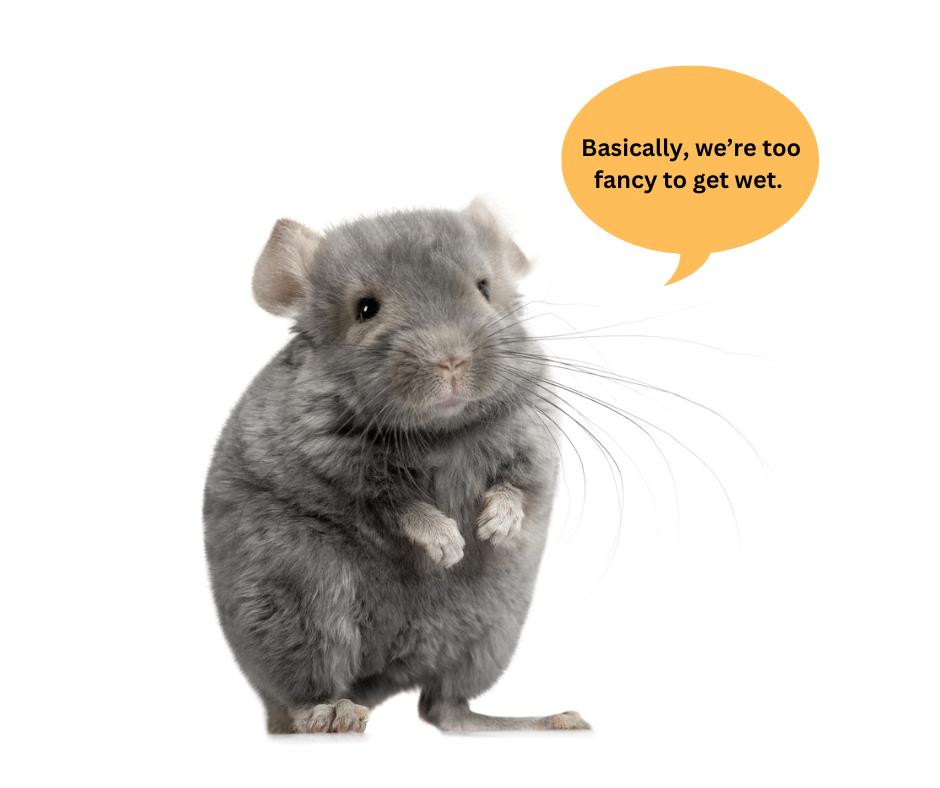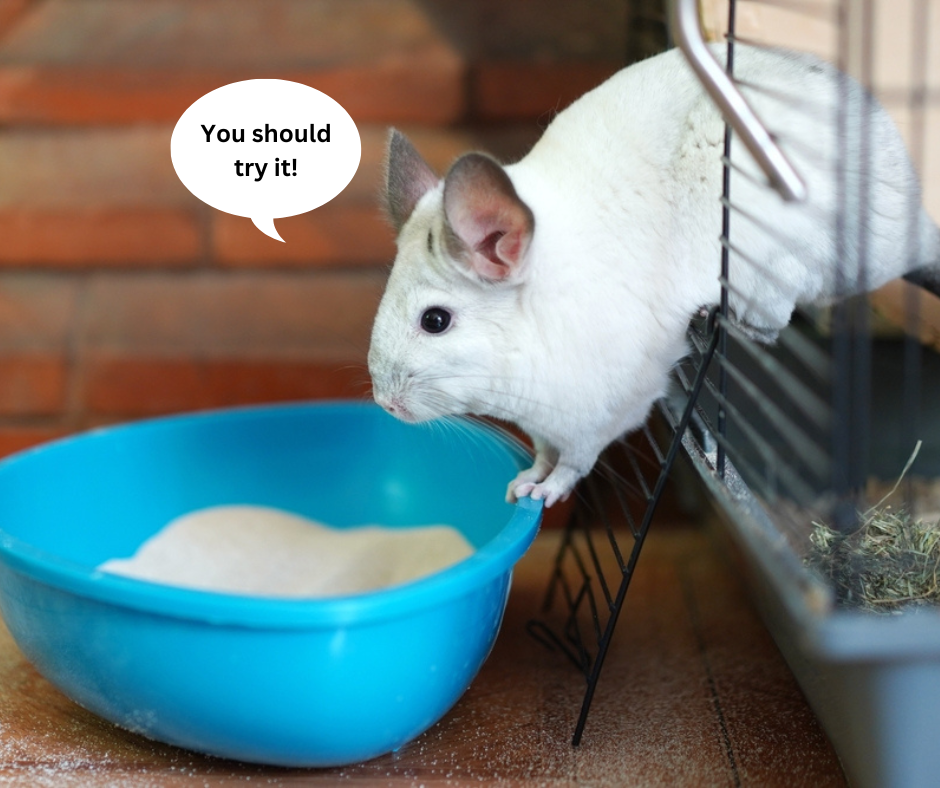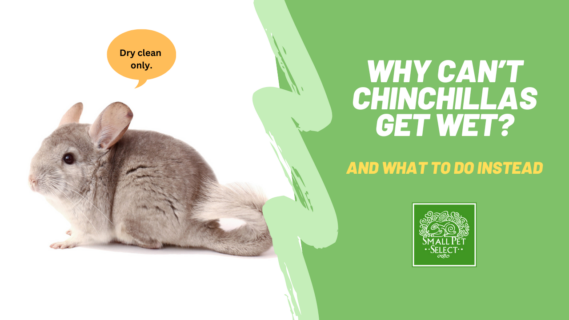One of the number one rules of chinchilla parenthood is to keep your chinchilla dry. Why can’t chinchillas get wet? Their fur is so dense that it makes it difficult for them to dry out. Moisture gets trapped on their skin which can lead to fungal infections.
Chinchillas have 60-70 hairs sprouting from each hair follicle. Humans usually have 1-3 hairs growing from one hair follicle, 5 at the most. When we say a chinchilla’s fur is dense we mean it!

What Happens When Chinchillas Get Wet?
If your chinchilla accidentally gets wet, you may notice the outside of their coat seems to be drying, but that doesn’t mean that their skin is dry or that moisture isn’t trapped underneath their thick coat.
Their fur also mats together easily after getting wet creating an even thicker blanket over the wet skin. Their thick fur isn’t hard for them to take care of unless you get it wet!
Skin Conditions
Skin dries quickly when it gets wet unless you have a thick coat sitting on top of it! A chinchilla’s coat traps moisture on their warm skin which makes a perfect breeding ground for bacteria and fungus to multiply. Ringworm is a common issue among chinchillas.
This leads to skin infections which need to be treated quickly so they don’t cause extended discomfort. Untreated skin infections can turn into systemic illness if the infection enters the bloodstream.
Signs of Skin Infections In Chinchillas
redness
flaky skin
hair loss
crusty and scaly skin
excessive scratching
skin lesions or abscesses
swelling
Hypothermia
While a chinchilla’s coat keeps them nice and warm, it can also be what keeps them cold if their skin is wet! Wet fur prevents a chinchilla from being able to regulate their body temperature.
Signs of Hypothermia in Chinchillas
shivering
low energy
clumsiness
pale gums
dilated pupils
difficulty breathing
If you ever suspect your chinchilla is ill, contact your exotic vet as soon as possible!
How Do Chinchillas Stay Clean?
Chinchillas stay clean by rolling around in dust! It’s very fun to watch and probably fun to do.

The fine dust helps to evenly distribute the natural oils on their skin and remove debris. A dust bath should only be available to chinchillas a few times a week. If a dust bath is a permanent part of their enclosure they may use it as a litter box, defeating the purpose of getting clean there!
Too many dust baths could dry out your chinchilla’s skin so 2-3 baths a week is usually all they need. Only use dust or sand made and packaged for chinchillas. Chinchilla dust is similar to the volcanic dust found in the Andes mountains, where the wild chinchillas bathe!
The dust used for your chinchilla’s dust bath needs to be replaced after it’s been used 2-3 times. Once the dust starts clumping together it’s not fit for a dust bath! Use a container large enough for your chinchilla to turn around and roll in. If it’s too small to move around in then your chinchilla won’t get the dust running through all of their fur!
What To Do If Your Chinchilla Accidentally Gets Wet
If your chinchilla accidentally gets wet, use a towel to dry them as much as possible. Turn the heat up in the room! Then set them in front of a fan or a hair dryer on a cool setting until they’re completely dry. Follow up with a dust bath to absorb any remaining moisture.
This is the best you can do. The cool air on their wet skin is risky and shouldn’t be done for a long time. Check with an exotic vet on how to keep your chinchilla safe when they accidentally get wet.
Why Can’t Chinchillas Get Wet Sometimes?
The time it takes to dry a chinchilla even when actively working to dry them as outlined in the section above, still puts your chinchilla at risk of hypothermia and skin issues. Your chinchilla is excellent at keeping themself clean and their skin healthy. They don’t need a lot of outside influences other than you providing a dust bath.
If you think there’s a medical situation where your chinchilla would need a bath in water, talk to your exotic vet!
Chinchilla research is continuously growing! If you have any doubts or concerns contact your exotic vet.
We are not veterinarians, and none of our information should be construed as veterinary advice.





